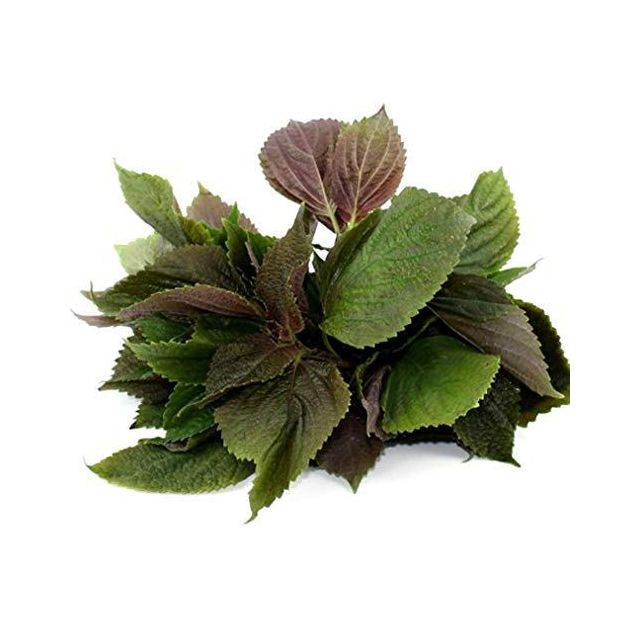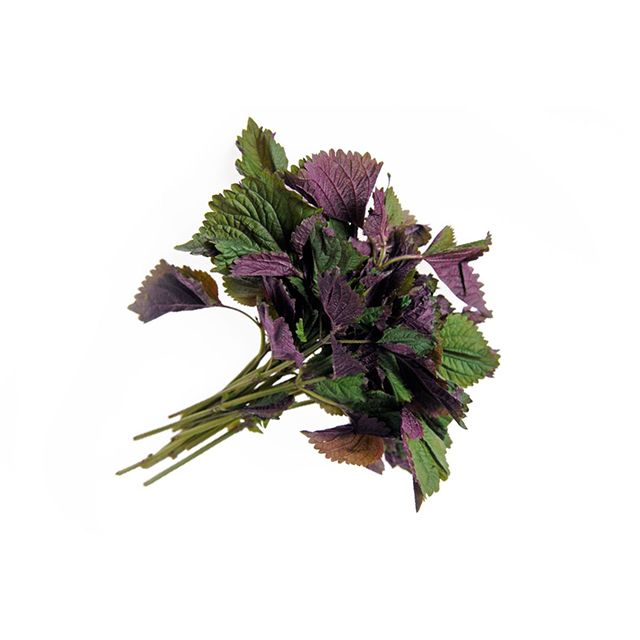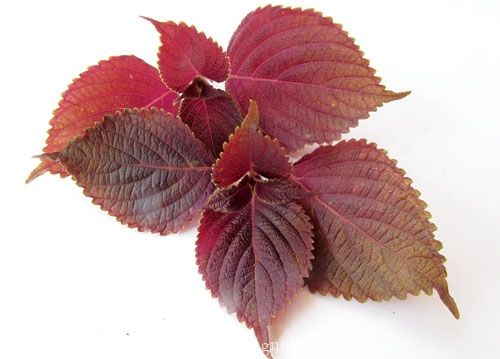BEEFSTEAK PLANT
Beefsteak plant, also known as perilla leaves, shiso leaves in Japan, and Tía tô in Vietnam. The beefsteak plant is a traditional Asian herb used in cooking and is often planted as an ornamental. The plant is a small, freely-branching annual herb that grows from 18-30 in. high; the stems are four-sided and covered with short hairs. It said that the beefsteak plant bears a strong resemblance to basil, which also belongs to the Mint family. The leaves are ovate and point and have a pronounced serrate or incised edge. They are opposite from each other in colors, ranging from dark green to purple. Beefsteak plants emit a strong refreshing minty aroma
The beefsteak plant is bright, with a bit pungent taste, reminiscent of mint and basil. They can also be described as a hint of cinnamon, anise, and cilantro, even with a lemony note in it. The flat leaves also give off a slightly rough, crispy texture.
 Passport
Passport
 How to eat
How to eat
The beefsteak plant has appeared in many Asian cuisines, playing a supporting role to other ingredients, adding flavors to the dish and enhancing the taste. The most common way to use the plant is to use it as garnishes and decorations. Moreover, the plant can be useful to make a healthy drink.
Aside from its culinary use, the beefsteak plant is also used in traditional medicine. The oil extracted from its seeds is used as much as lineseed oil.
 Health benefit
Health benefit
Beefsteak plant contains 0.3-0.5% essential oil (by dry weight), 20% citral. Essential oil components are mainly perillaldehyd, L-perrilla alcohol, limonene, α-pinene, hydrocumin, also elsholtziacetone, β-cargophyllene, bergamoten and linalool perillaaldehyde.
According to Eastern medicine, seafood has got cooling properties, therefore It is necessary to add some spices such as beefsteak plant leaves (which contain hot properties) due to reduce bloating, abdominal pain and especially if you are allergic to seafood dishes or be poisoned effectively. beside that, the leaves contain active ingredients that inhibit the formation of uric acid, which cause joint pain and gout. therefor thanks to their anti-inflammatory and antibacterial properties, due to the plants being very helpful for the people with problems of stomach diseases.
Other health benefits include anti-aging, treating dark spots, melasma, burning excess fat, eliminating fat quickly, and treating cough, heat rash, also reducing fever in summer
 Export Overview
Export Overview
Recently the beefsteak plants became an exported product as the demand for high quality and safely grown beefsteak plants from overseas countries has been rising. The model of growing perilla for export is quite new, profitable, and has a good prospect for local development. Vietnamese beefsteak plant has infiltrated international markets such as Japan and Korea, ...
 What’s FOSACHA
What’s FOSACHA
Recognizing the potential of the great economic value of the beefsteak plant. FOSACHA has chosen it as one of our main exported products. We procure our product directly from the farms of our supply chain. The shallot is grown using the traditional cultivation method and hand-harvested.
Our beefsteak plant is free from damage, soil cuts, and other infections. Most importantly, the product must be GlobalGAP- compliant, to able to meet the standards of food hygiene and safety, as well as to be of clear origin to be traceable. Our quality personnel test the product on the parameters of taste and freshness during the procurement and also makes sure that the packaging is also being done in a proper manner, as for international standards.
If you are looking for a reputable supplier to import high quality, VietGAP and GlobalGAP compliant Vietnamese beefsteak plant with stable yield, as well as establishing a long-term, mutually beneficial partnership. Please feel free to contact us for further discussion.
 Storage advice
Storage advice
Stored stored in a cool, dry place at 7 to 10 °C and at a relative humidity
(RH) of 85 to 90%
 Availability
Availability












